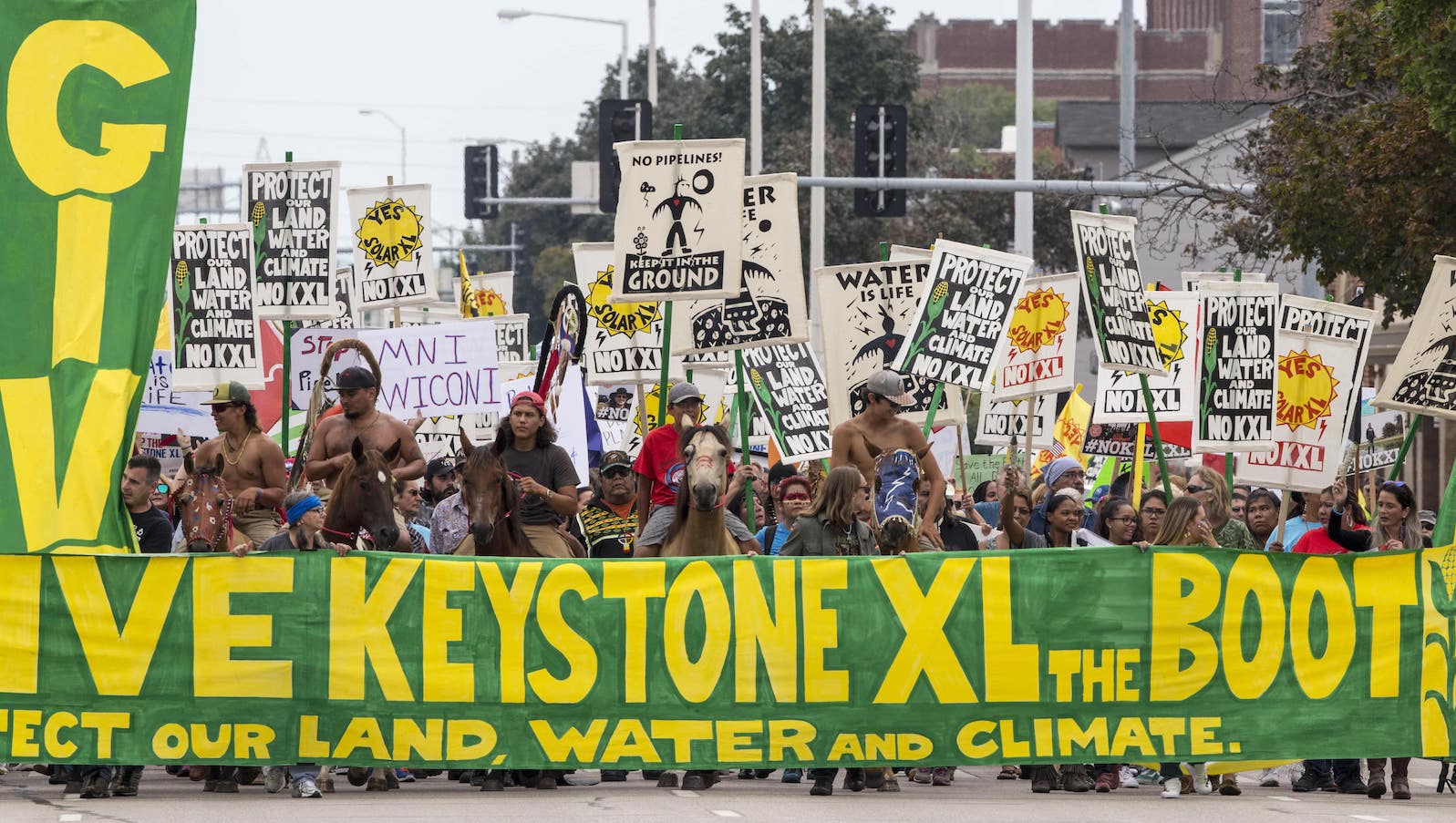When Indigenous community organizer Jade Begay , Tesuque Pueblo and Diné, found out that Donald Trump had won the election in November 2016, she was en route to Standing Rock from New Mexico to protest the Dakota Access pipeline. The underground oil pipeline snaking from North Dakota to Illinois had been the target of years of opposition by Indigenous activists like Begay, who had filed lawsuits against the pipeline and then withstood freezing temperatures and armed police to block its construction after their legal challenges failed. The strength of their resistance had turned Standing Rock into an international symbol of Indigenous activism and resistance.
It had inspired a new generation of Native American activists, and helped lead to a 2016 victory by the U.S. Army Corps of Engineers in the waning months of the Obama administration to delay the opening of the pipeline.
But the moment Begay learned of Trump’s victory, sitting in a ramen shop in Colorado on her way north from New Mexico, she realized that win would be short-lived. Grist thanks its sponsors. Become one .
To support our nonprofit environmental journalism, please consider disabling your ad-blocker to allow ads on Grist. Here's How She was right. On January 24, 2017, just four days after his presidential inauguration, Donald Trump signed an executive order to speed up the construction of the Dakota Access pipeline and pave the way for the 1,172-mile pipeline to go online just five months later.
The decisio.


















